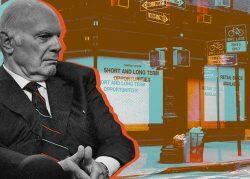As the office market continues to struggle with vacancies, retail has bucked the trend.
National retail availability is not only below where it was when the pandemic hit, but at the lowest level since the Great Recession, according to a Bisnow report of an analysis by CoStar.
As retail vacancies decline, rents are shooting up. The average asking rent for retail properties is growing at its fastest pace in more than a decade, according to the analysis.
Consumers have been increasing their retail spending in recent weeks, despite talk of a recession. From June to July, consumer spending excluding automobiles increased by 0.4 percent, according to the Census Bureau.
Read more



While consumer spending influences whether companies fill retail spaces, other factors are at play. Retail bankruptcies are at their lowest level in seven years. And inflation could be prompting Americans to spend money before prices go up.
Spec development of retail properties is also low, meaning developers are signing tenants for space before it is built, which keeps vacancy rates down. Approximately 34.6 million square feet of retail space came on line in the first six months of the year, but only 10.6 million square feet has been delivered without a tenant in the past 12 months.
The 15-year average of tenant-free deliveries prior to that was 15.6 million square feet per year.
Demolition of obsolete retail space is also on the rise, keeping vacancies down. Last year, a record 36 million square feet was razed nationwide. Another 18 million square feet has been demolished this year.
Covid seemed like it would be the death knell for brick-and-mortar retail as e-commerce boomed and people avoided stores. Some predicted the sector would never fully recover.
But retail has been resilient. Asking rents in some of the hardest hit areas of Manhattan are rising and could approach pre-pandemic levels by the end of the year.
— Holden Walter-Warner
